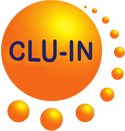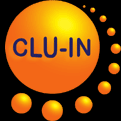Search Result
A FIELD STUDY OF A NOVEL PERMEABLE-REACTIVE-BIOBARRIER TO REMEDIATE CHLORINATED HYDROCARBONS CONTAMINATED GROUNDWATER
Liu, C., X. Chen, S. Wang, Y. Luo, W. Du, Y. Yin, and H. Guo.
Environmental Pollution 351:124042(2024)
Filed Under: Demonstrations
Filed Under: Demonstrations
A novel three-layer permeable reactive barrier (PRB) material incorporating Fe0 and coconut shell biochar was field-scale tested at a chlorinated hydrocarbon (CH)-contaminated site. Monitoring data revealed conditions conducive to reductive dechlorination (low oxygen levels and a relatively neutral pH in the groundwater). The engineered PRB material consistently released organic carbon and iron, fostering CH-dechlorinating bacteria proliferation. Over 250 days, the pilot-scale PRB achieved CH removal efficiencies from 21.9%-99.6% for various CH compounds. Initially, CHs were predominantly eliminated through adsorption and iron-mediated reductive dechlorination, but microbial reductive dechlorination emerged as the predominant mechanism for sustained and long-term CH removal. See the introduction and section snippets at https://www.sciencedirect.com/science/article/abs/pii/S0269749124007565
Environmental Pollution 351:124042(2024)
Filed Under: Demonstrations
Filed Under: Demonstrations
A novel three-layer permeable reactive barrier (PRB) material incorporating Fe0 and coconut shell biochar was field-scale tested at a chlorinated hydrocarbon (CH)-contaminated site. Monitoring data revealed conditions conducive to reductive dechlorination (low oxygen levels and a relatively neutral pH in the groundwater). The engineered PRB material consistently released organic carbon and iron, fostering CH-dechlorinating bacteria proliferation. Over 250 days, the pilot-scale PRB achieved CH removal efficiencies from 21.9%-99.6% for various CH compounds. Initially, CHs were predominantly eliminated through adsorption and iron-mediated reductive dechlorination, but microbial reductive dechlorination emerged as the predominant mechanism for sustained and long-term CH removal. See the introduction and section snippets at https://www.sciencedirect.com/science/article/abs/pii/S0269749124007565
The Technology Innovation News Survey welcomes your comments and
suggestions, as well as information about errors for correction. Please
contact Michael Adam of the U.S. EPA Office of Superfund and Emergency Management at adam.michael@epa.gov or (703) 603-9915
with any comments, suggestions, or corrections.
Mention of non-EPA documents, presentations, or papers does not constitute a U.S. EPA endorsement of their contents, only an acknowledgment that they exist and may be relevant to the Technology Innovation News Survey audience.




